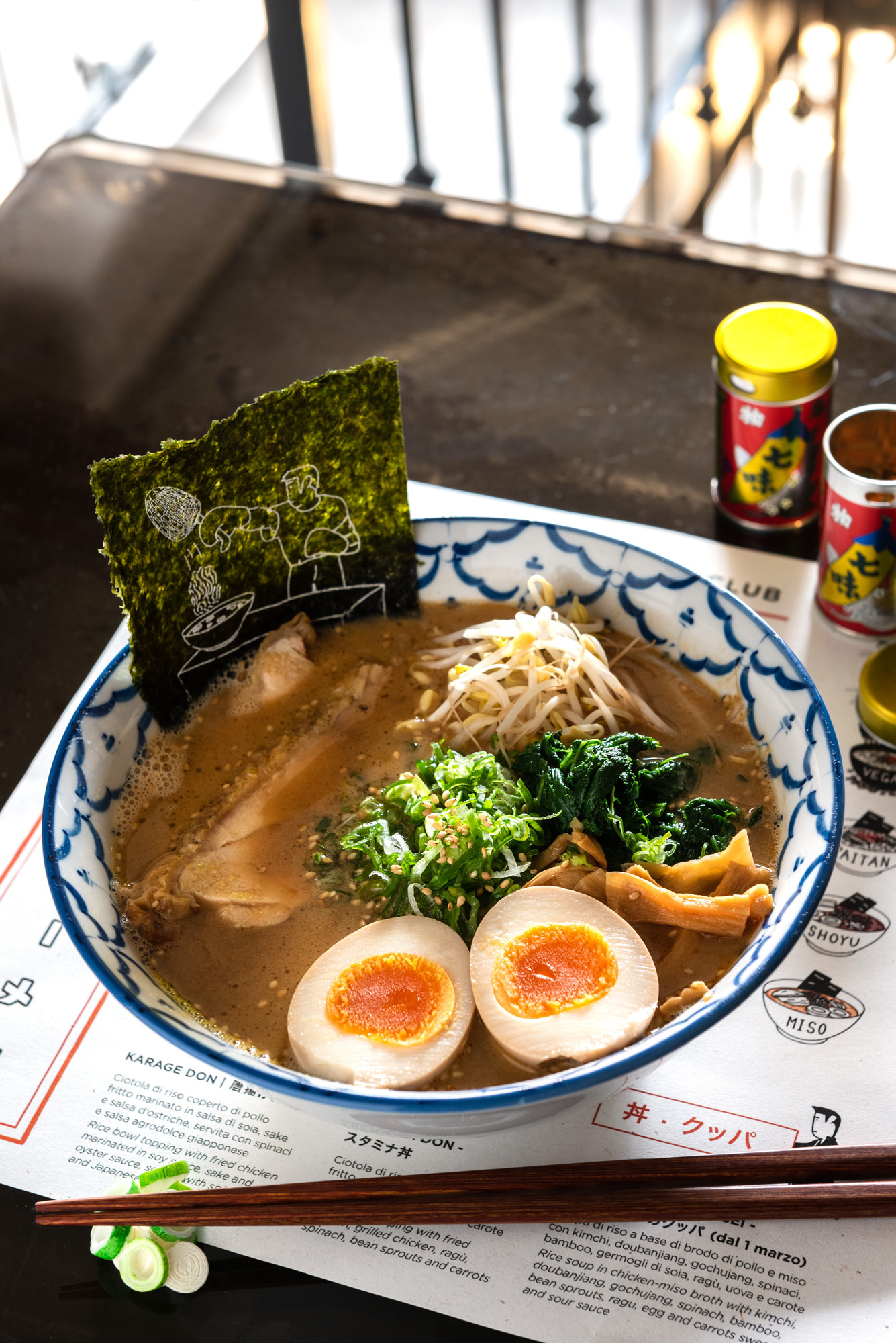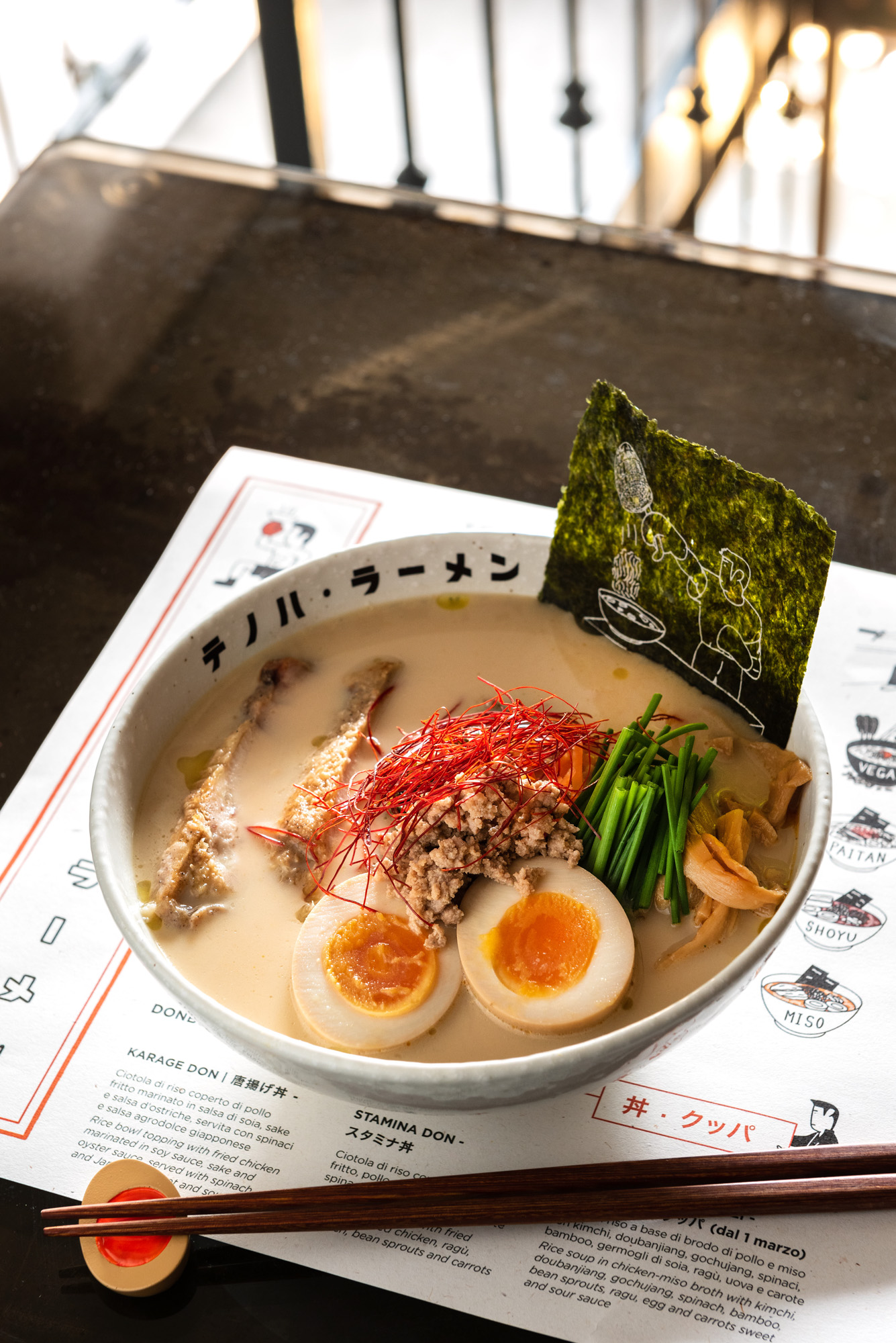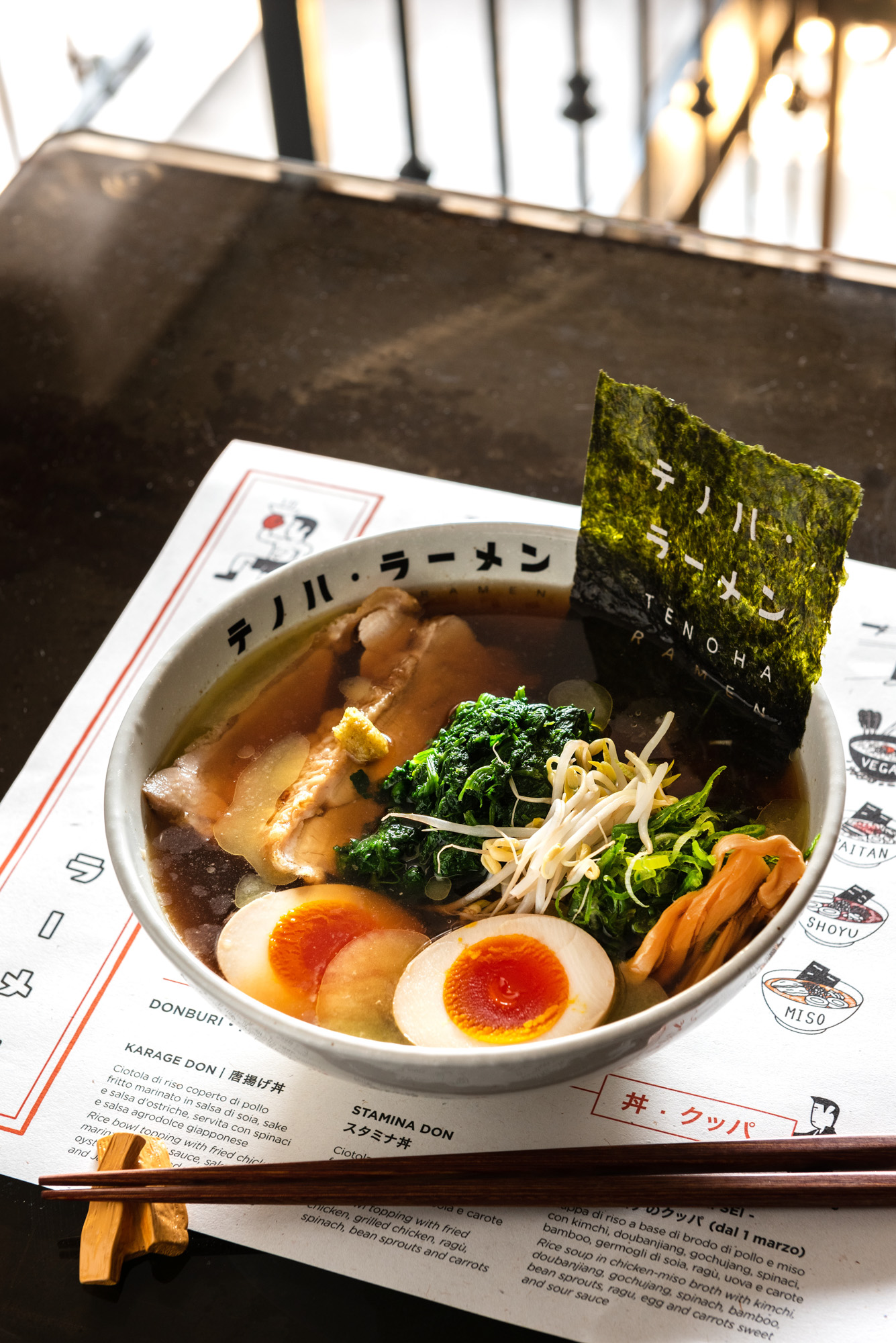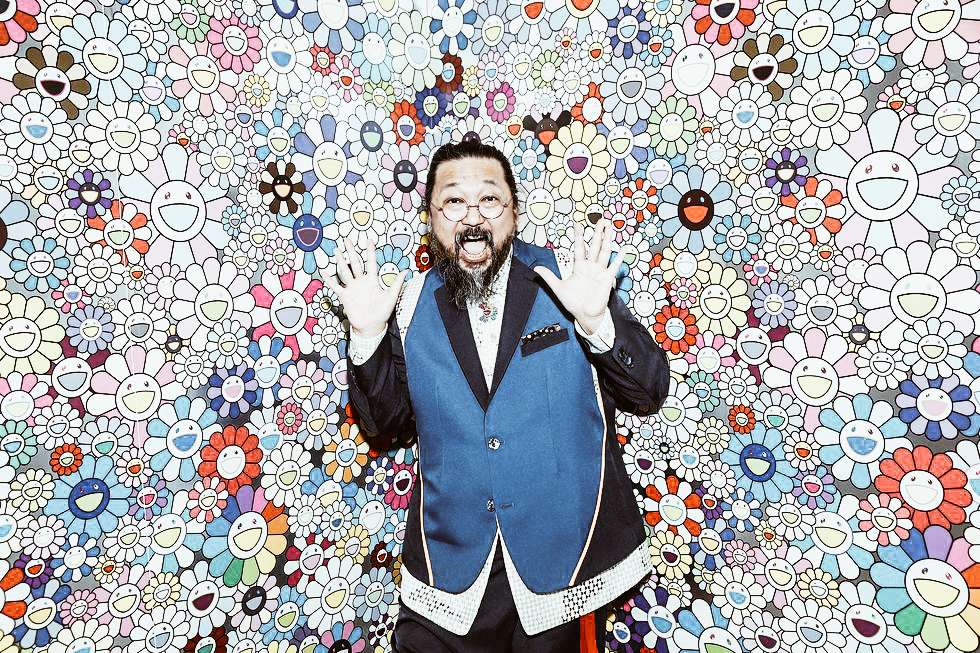Business Focus: the psychology of customer relations
The "Business Focus" column on Japan Italy Bridge continues and today we are talking about problem solving, communication and customer relations, also in Japan.
Problem solving: the psychology of customer relations, also in Japan
Understand who is in front of you. This is a lesson that I have been given personally and that I always try to carry on. What does it mean to really understand who you are dealing with? Surely it is the basis of every activity, both personal and professional, and if it were easy, everyone would succeed effortlessly in their work. It is not easy.
Only a few people manage to stand out from the masses and from the noise that, especially nowadays, is heard all too often. In the midst of the noise a voice, an attractive and loyal voice. The voice of someone who is willing to listen, but very carefully, to the needs of others. To build an audience you need this, along with a lot of intelligence to understand human behaviour.

photo credits: artplusmarketing.com
Attracting and keeping attention.
Let's talk for example, to make it more understandable, about the podcaster. The good podcaster not only has to attract his audience but also has to do his best to keep the listener's attention without shouting too much and without having voice drops that can lead to inattention.
Dreams must be created, needs must be met. Determination. Passion. Constancy. Consistency. One must never show anything that is contrary to the above factors.
Understand your own psychology
Before understanding others, you absolutely must understand yourself. In order to build an audience, one must first understand what we ourselves are inclined to do.
Are we able to communicate in the right way? Our job is to be among people, to attract customers, to care about our customers.
Are we not able to communicate well? Being in the "backstage" and in the "background", do you think it is bad or demoralising? No, it is not. Because most likely, the people on stage are only good at that and they should also learn how to build the show because the artist in question would not be able to do anything without a staff that creates the show from scratch.
In short, before you make yourself likeable by making an effort, the study to be done is very heavy and long and know that people notice your fake smile.
Don't risk what you are not! Whether or not you are able to understand others and therefore yourself, don’t go into what you are not suited to. Of course, you can always learn, but it takes a lot of time. It takes time to understand yourself and to understand others.
Let's take another example: my passion.
Having a passion and doing everything to pursue it is certainly very important, but to do it and do it well, you need to have the ability. Skills either come naturally or are learned over time. One thing I personally don't agree with is pursuing a passion without counting the rest, with your eyes closed. Often, unfortunately, this leads to not achieving the dream and in the worst cases, to the complete ruin of the path towards that dream. The opportunity can be misplaced, to cut a long story short.
Passion only follows commitment. To have passion you need commitment. Instead of following your passion, pay attention to what you find engaging.
Make yourself unique and don't do it just to attract someone or something, stay unique.

photo credits: theabp.org.uk
Build something unique and move forward by being unique.
Make it clear that you are willing to be a staple for your customer, make it clear that you are willing to solve their problem.
SBe their problem solver.
So what is problem solving? Let's look at this essential part of building an effective audience.
As we have already said, giving confidence and ensuring your presence at all times is essential. You should NEVER get the customer to say or just think "I can get by without this person". That way customers are lost. One must be able to become essential in solving a problem.
In our case, the problem might be the construction of an event or the constancy of staying alive socially. We want to be problem solvers, so we need to have the ability to:
- Recognise a problem
- Define a problem
- Determine the cause of the problem
- Establish priorities
- Select possible solutions
- Deciding on a solution
- Solve the problem

photo credits: 1985fm.com
To be effective as a problem solver, you need to train these skills above all:
- Intuition
- Common sense
- Lateral thinking
- Sensitivity
- Lucidity (be careful because this often clashes with the previous one)
- Understanding of limits
- Understanding of capabilities
- Decision making
- Constancy
- Consistency
It's not easy and some people are born with problem solving skills, but even if we don't have anyone in the team who can be a problem solver, we have two paths to take:
- Look for problem solving
- Become a problem solver ourselves
Of course, the road is not easy, because mind you, I did not say: Improvise Problem solving! It is not only very difficult but also not very productive.
And the client realises this most of the time.
Finding a purpose
The purpose must be personal and the lessons we are given must only be a help. Never take something someone else says as gold! As much as a person can be an important teacher, he/she must remain a guide, help in difficult times and be able to balance his/her psychology with yours. Yes, because what may work for someone can be completely useless for someone else.
And the client realises this.
Never listen to prejudices.
Although many times they may tell the truth, even more times they are bad advisors. We may be faced with a client who we don't "like" on the skin. How many times have I heard these phrases... these feelings, even though they are not to be thrown away completely, must not become predominant. let's make sure that the prejudice can remain as such (i.e. a judgement by feeling) and let's make it fragile, so fragile that it is then supplanted by judgement.
Build a very large network
Having a very large network of contacts is a very important help. In that way, among the many names, some may become clients, clients to be followed with constancy and over time so that prejudice is only a feeling that will then give way to judgement.
Then afterwards if you like you can also say "I told you so, I felt it!" it's ok if you like, but it's not required.
Be what you are, but hey I am not talking about being what you are despite everything. You have to be who you are but with a job behind you, you have to create a real awareness of who you are and then also have the honesty to understand the limitations of it, before someone else notices. Get help from those who have a greater capacity, and I'm talking about both backstage and frontman. Don't try to be something you're not, because if you really want to be something you have to put a lot of effort into it.
Be convincing
This, psychologically, leads to convincing yourself first. Don't try to convince someone else of something you don't believe!
They notice, trust me.
Work to convince yourself of something and then convince others. You will probably piss off quite a few people, but it will mainly be your competitors. The customer, the person you are problem solving for, will be by your side and will see you.
Be reliable
You have to be something known, something reliable. You must not run away at the first obstacle and you must be able to make yourself known. People tend very much to get involved with what is already known and fear the unknown. If you notice, we ourselves are attracted by what is known. We are usually more inclined to listen carefully to a song we already know, whose story we already know, than to a new one. Very often someone says to us, "Listen to it, it's beautiful, trust me!"
And the “trust me!” is the problem, because our mind is selfish and always tends not to trust, so then we will never listen to the song with the attention it has been asked for until it becomes part of our mind. Until we like it. This makes us realise how important trustworthiness is, how much we have to study and work to be, if not on a par with the mind of the client, as close as possible.
Just don't lose the essence of what made you fall in love, always think about that.
Modelling yourself for public perception
Always be yourself, it is said, do everything not to please others, but only please yourself. In this way, I would say you can even shut down and live in your own desert island without anyone bothering you. But if you want to deal with others, it is very important not only to have a good perception and knowledge of yourself but also to do everything to improve yourself so that you become an essential and indispensable part of the client. You have to be yourself, but with good work behind you. Because in a job with clients, it is essential to be able to relate to them and work to stay with them over time. Whether you like it or not, everything you create shapes people's perception and opinion of you. Unless you really like the desert island, at which point you can do without working while eating coconuts.
When you approach other people and want to work with other people, you have no other option but to live up to other people's expectations. Unfortunately, the belief that "we are us and we don't have to move a finger to be appreciated by others" is too common to be supplanted, but I hope with all my heart that sooner or later everyone's mind will open up to the possibility that we are not all the same and that the first ones we really need to work on are ourselves. Then we can think about approaching others and making good connections at work.
Being able to be problem solving also means being critical
Have the ability to understand where we are wrong and move forward by fixing the problem. We need to be our own problem solvers! Being critical also means having the ability to deal with criticism: finding the right explanation for unconstructive criticism and accepting constructive criticism. If they are called 'constructive criticism' it means that they are able to build something. You can spend your time feeding and paying attention to trolls and or you can spend your time creating something good and maybe only listen to what is constructive, the choice is yours. What you really need to avoid is the presumption, which, mind you, is quite different from confidence.
Conceit makes us blind, confidence makes us gain even more sight.

photo credits: economist.com
Open your minds
And here comes my moment, OUR moment. Closed-mindedness does not help anyone, not even at work. It closes not only our mind but also avenues and possibilities. We often don't approach someone else out of fear and lack of knowledge. Prejudices, stereotypes, all this closes us in the desert island and does not make us look beyond.
Looking beyond
We decided to work with Japan, but not without a lot of study and effort. We have shaped our knowledge and skills in order to get closer to these people. We have studied and are still studying the language in order to get closer to them, we want to understand them more and more so that we can become a real Problem Solver for them, which can remain so over time, which can be a support in times of difficulty that should not be there because we know how to avoid them from the beginning.
The difference in language, culture, habits... we have said that all this is frightening. But we have to fall in love with this language, this culture, these customs, everything that has been said so far. If there is no way of shaping your own mind and falling in love with all these things yourself, I would say there is no point in trying. If you realise that you are in love with it, then start working and begin to understand what the Japanese in question needs. Very often we have come across what we never expected: incredible similarities. Japan and Italy look very much alike, but these things are only perceptible to the eye of someone who wants to be an expert, someone who wants to improve, someone who wants to approach. As I have said before, we have to fall in love first, then make others fall in love and, in this case, our client.
You cannot please everyone, but strive to please those who deserve it, those you want to walk alongside both professionally and privately. Most likely you will be not only their problem solver but also and above all yours.
The beauty of a website, of a social, of everything that is communication is important and it is the work of the backstage. But it is nothing without the work of the frontman, the same can be said of the backstage. A well-staffed team is one that has both back and front stage, never forget that and, at the end of the day, the psychology of building an audience is not that different from psychology in general. If it applied to everything we live, maybe things would be better for everyone.
Fall in love, but really fall in love. Oh well, there are always coconuts...
TENOHA &|RAMEN: The Ramen Club
TENOHA &|RAMEN is completely new and becomes TENOHA RAMEN CLUB! Are you ready for a unique experience?
TENOHA &| RAMEN reopens with the new "Ramen Club"
Author: SaiKaiAngel


"Turning the Ramen experience into a guilt-free pleasure" These are the words of the extraordinary chef Takao, the one who has been delighting us with the best ramen in Italy for years. Takao is not only an incredible chef but also a former professional boxer! You didn't know that, did you? Chef Takao has always been very strict about nutrients, but he has always had a soft spot for ramen. As a calorie-dense dish, ramen was considered an "enemy" to his boxing career, but would such a warrior have given up? Of course not!
That's why the new TENOHA RAMEN CLUB was set up so that you can enjoy this dish without any sense of guilt!
As soon as he left boxing, Takao became a ramen chef, perfecting himself to such an extent that he became the one who is able to offer the unique and unrepeatable experience of authentic ramen here in Italy, creating numerous recipes to experience ramen truly guilt-free.
TENOHA RAMEN CLUB, the delicious work of chef Takao, is a place where you can not only satisfy your palate with the authenticity of Japanese ramen, but you can do it without any sense of guilt, with the knowledge that each dish is perfect for the sportsman or for those who want to eat in a completely healthy way. We are in front of an absolute novelty here in Italy, you will realise it just by entering the TENOHA RAMEN CLUB, completely reborn to tell a story, one of those very important stories that will leave you fascinated. You will look around and be immersed in the world of chef Takao, in his history, in his continuous study to always offer the best to anyone who wants healthy and tasty nourishment. Work, effort, experience, health, determination and safety - all this is TENOHA RAMEN CLUB!



You will feel part of that important history, pampered and confident that you are in the hands of a chef whose mind is always on preparing healthy and nutritious ramen, 365 days, 24 hours a day.
Live and let your friends and loved ones experience this new freedom to eat the true tradition of Japanese ramen without any sense of guilt!
From 12 February, TENOHA RAMEN CLUB has a new face and is ready to amaze you again, always in the expert hands of a great chef and a great ex-boxer! Get to know Takao and his story!
TENOHA RAMEN CLUB - Via Vigevano 20, 20144 Milano
photo credit: Anna Daverio
TENOHA MILANO: Afternoon tea
Choose to spend Valentine's Day in a totally different way! Do you want to live and let your loved ones live absolutely unrepeatable moments? Now you can, thanks to TENOHA Milano, which always has something new and sweet in store for you!
TENOHA &| TASTE: Afternoon Tea per San Valentino
Autore: SaiKaiAngel

And we are talking about a sweet surprise, TENOHA AFTERNOON TEA is a unique, special experience that only our favourite corner of Japan here in Italy can give us. Would you like to spend a special day and make your loved one spend it too? Valentine's Day in the name of Japan and a unique experience on the iconic tatami at TENOHA Milano! Want to know more? We have some pictures below that will surely make you even more curious!
10-14 February: Valentine's Edition






The tradition of Japan has never been closer. For Valentine's Day, let's immerse ourselves in a unique and traditional Rising Sun experience on the tatami at TENOHA! Close the curtains and enjoy tea, drinks and handcrafted Japanese sweets in total relaxation! Only together with your loved ones will you be able to enjoy a tasting that you will hardly ever experience again. A few hours in the peace and quiet of the Japanese experience, with the best teas and sweets and of course the usual enormous attention and pampering that you can only find at TENOHA. Choose the day and time of day that suits you best!
Details
When: Two time slots: 14:00 ~ 16:00 | 16:00 ~ 18:00
Where: TENOHA MILANO — Via Vigevano, 18, 20144 Milano
Cost: 35€/pax (min. 2 people)
Remember, both in respect of security and of your privacy, booking is always compulsory! To do this you can use the following email address and phone number: taste@tenoha.it | (+39) 02 8088 9868
For more information, please click on the following link: https://www.tenoha.it/taste/tenoha-afternoon-tea/
photo credit: Anna Daverio
TENOHA MILANO: Sukiyaki Experience
TENOHA Milano amazes us once again and does so with a special delivery. We are talking about the SUKIYAKI EXPERIENCE! A unique opportunity to have Japan at home.
TENOHA &| TASTE: Sukiyaki Experience
Author: SaiKaiAngel
Surely you know the best meat in the world, WAGYU, right? Now, thanks to Sukiyaki, you can have it right at home!
Let's first explain what this dish is: Sukiyaki is a very important dish in the Japanese culinary tradition. We are talking about thin cuts of beef simmered in a pot together with tofu, mushrooms, udon and vegetables. You can also dip the cooked meat in a raw egg to maximise the subtlety of the Wagyu's flavour.
We're talking about the world's best Wagyu here, not just any meat, but Wagyu Kagoshima 'A5'.
Wagyu beef is characterised by a high intramuscular fat density that makes the meat extremely tender, and the famous 'A5' grade KAGOSHIMA Wagyu boasts the best flavour of all.

Kagoshima was ranked first among all regions in Japan at the 2017 "Wagyu Cattle Exhibition".
TENOHA PROVIDES YOU WITH EVERYTHING
Sukiyaki delivery also includes full service. It will be delivered to your home:
✓ SUKIYAKI POWDER
✓ LADLES and POTS
✓ FUROSHIKI and BACCHETTE
✓ INDUCTION PLATE
✓ BROTH (original recipe made of soy, sugar and mirin)
Make the Sukiyaki you want, it's very easy, you can do it easily with the link below and if you use the code SUKIYAKI25, you'll get a 25€ discount on the total order at checkout: https://sukiyaki.tenoha.it/
Opening Hours
DINNER: from 18:00 to 21:00
LUNCH: from 12:00 to 14:30
*LUNCH service available from Thursday to Sunday.
Don't miss this opportunity, TENOHA is coming to you! Are you ready for it? Impress your friends and family with this unique and rare experience!
photo credit: Anna Daverio
Business Focus: The importance of communication and marketing in Japan in times of pandemic
Communication has always been important in our lives and in this time of pandemic due to the spread of COVID-19, its essentiality has become even stronger. At a time when we are forced to forego hugs and physical proximity, what would we do without the Internet? Thanks to communication we can get closer to the rest of the world, our door is not closed thanks to the internet.
The importance of communication and marketing in Japan in times of pandemic
Autore: SaiKaiAngel

photo credits: mosaikoweb.com
The COVID-19 pandemic is certainly a very difficult time in which we are all involved, but we try to see the positive in this as well. What do they say? If you feel like you're in a tunnel, decorate it! So, while we are waiting to see the light at the end of the tunnel, we are trying to do everything to save our company and our relationships. The imposed lockdowns are very difficult to manage, but how much have they succeeded in making us realise the importance of the "small" things? I put the word SMALL in quotes, yes, because in this pandemic we have realised how BIG the SMALL things are. How special our normality is. How much we have looked for a hug, even if it is virtual, how much we have reinvented ourselves to keep alive a work project for which we have done so much.
Let's take advantage of this moment to start again even stronger than before, let's take some time to think, reinvent ourselves and prepare for total recovery.
Remember, however, that there are no miracles! You have to rely on the world of social marketing, but not alone. There are specialists in the field, people whose job it is to advise you and accompany you in the world of social marketing and communication without making you run into obstacles (like us).

photo credits: mosaikoweb.com
Never put your business activities on hold.
We are lucky enough to have the internet, why put a job or business on hold? The idea that one day the internet could go from being important to essential has been around for a while. We can attend meetings, we can organise, we can actually work together and stay in touch with our customers, all online. We can also focus on stepping up the content of our social media, of our websites, so that as soon as there is a chance to restart after the pandemic, we will be ready!
If our shop is closed, why take away the possibility of creating an e-commerce to continue selling our products? If we haven't felt the need to do so until now, we are now faced with this possibility, which is gradually becoming more and more important. If we can, let's try to build an online channel to communicate and continue our business! Let's also try to 'decorate' it as best we can.
Let's reinforce our corporate values and corporate image online!
Let us be seen, we have the opportunity! Let's not stop events, let's create them online and if we really don't want to do that, let's stop and organise the ones in presence, we have the possibility to do that, let's strengthen our communication network now!
Let's keep in touch!
Many children can continue to study and attend school thanks to Distance Learning, what we all know now as DAD. Is it important? Of course it's a help. If there wasn't this possibility of online meetings, children would surely be completely excluded from teaching and meeting their classmates. Instead, thanks to Distance Learning, students are able to interact with each other and maybe even distract themselves. Distraction in these moments of closure is very important, if there were no possibility to communicate online, we would really be locked out of the world. Perhaps now more than ever we realise how important online communication can be.
Still having doubts? Let's go and see what's happening in the rest of the world and especially in Japan, which has always been our focus.
The importance of communication and marketing in Japan in times of pandemic
Japan has always been very technological, it has always believed, almost more than anyone else, in the importance of online communication and marketing, and in fact it is now certainly at a better advantage than those who have stuck to tradition.
Japan lives with social networks in order to stay in touch with the rest of the world. Let's take a look at the most used social networks in this country with the relative percentages thanks to Statista:
- LINE 77,4%
- Twitter 38,5%
- Instagram 35,7%
- YouTube 23,2%
- Facebook 21,7%
- TikTok 8,1%
- Skype 7,1%
Il caso LINE


photo credits: google.com
As you can see from the statistics, if in the West we use Whatsapp, Facebook and Instagram more, in Japan they rely a lot on LINE and Twitter. Do you know LINE? It is considered to be the Japanese Whatsapp, and has around 84 million monthly active users in Japan (end of 2020 statistics).
What makes LINE so popular?
LINE was born in 2011 from a collaboration with Naver, a South Korean platform.
Immediately after the great earthquake in Japan in 2011, most conventional communication channels were disrupted due to power outages. Therefore, official sources turned to online to communicate the news and confirm the safety of friends and family. The app was released for public use later that year, and proved very appealing to Japanese consumers due to its unique and customisable design, allowing for both private and business use.
How do the Japanese use social networks?
Compared to neighbouring countries, Japanese people used social networks 65% compared to 88% in Taiwan and 87% in South Korea. In contrast, as of January 2019, Japanese internet users spent an average of 4.8 hours a day with digital content, while Japanese 18-34 year olds used up to six hours. According to a survey, the main reasons for using social media among the younger generation are the convenience of gathering and sharing information, as well as connecting with friends and colleagues.

photo credits: epigeum.com
We have this moment to think about it and to reactivate as soon as possible. this has always been our job and now we finally realise that it has never been more useful. It was already before, but now it has become essential. We are ready to accompany you and are you ready for the (online) rebirth?
TENOHA MILANO: Kimagure
December arrives and with it holidays and a special menu for the delivery of TENOHA Milano, in collaboration with Satoshi Kawamoto and Green Fingers Market Milano here is the KIMAGURE!
TENOHA &| TASTE: KIMAGURE in collaboration with Satoshi Kawamoto
キマグレ
Author: SaiKaiAngel
Kimagure (キマグレ) in Italian means "capricious" and this tasty and special whim can be delivered from the corner of Japan in Italy, which as you know is TENOHA Milano, from 9th to 14th December directly to your home exclusively with UBEREATS!
Here are the "capricious" proposals of the CHEF, let's go into detail about this Kimagure
Special menu + set: “Dried flowers confetti” by Greenfingers Market Milano



CABBAGE ROLLS: cabbage rolls stuffed with minced pork served in dashi broth with YAKIONIGIRI, an onigiri stuffed with katsuobushi, covered with miso sauce and Shiso leaf.
Do you find all this tasty, don't you? But even the eye wants its share. We know that the dishes of the Chefs of TENOHA Milano are always beautiful to see, but this time, thanks to the collaboration with Satie-san, Satoshi Kawamoto of the famous Green Fingers Market Milano, you can receive the fabulous dish with a set of "Dried flowers confetti". A chance more unique than rare, from 9 to 14 December 2020 pamper yourself with this great news all Japanese!
Follow the Instagram STORIES of TENOHA Milano to learn more!
Enjoy this set at home, feel immersed in the Japanese atmosphere and let us know with photos, videos and stories how special you find it. We at Japan Italy Bridge are ready to try it, follow also our stories to enjoy the Japanese colours and atmosphere of the collaboration of TENOHA Milano with Green Fingers Market Milano!
Instagram: @TENOHA Milano, @satie_san @greenfingersmarketmilano
photo credit: Anna Daverio
Business Focus: Digital transformation, the key to increase the economy
This pandemic has hit the world economy hard and one of the keys to recovery is digital transformation. Let's continue our business focus and today we are talking about just how much an online presence can influence the economic development of Italy and Japan.
The Digital transformation: could it be the key to increasing Japanese consumer spending?
Author: Erika
In recent months, many companies have launched themselves into the digital world and many shops have transported their windows into the area of e-commerce. This clever move has allowed them to continue working even during the months of lockdown, and not to stop their production.
However, in Japan, as well as in Italy, the economic recovery has slowed down considerably. For what reason? The reason for this is that in both countries the spread of e-commerce and online presence is lagging far behind other countries.

During the months of the lockdown, people drastically reduced their visits to shopping areas. However, in OECD (Organisation for Economic Co-operation and Development) countries, retail sales have increased and on average above the pre-pandemic level. This means that the majority of sales were made through online sites and e-commerce.
The situation is different not only in Italy but also in Japan. Here, sales are still below the levels recorded before the pandemic. In these two countries that are so different and yet so similar, people have locked themselves in their homes without spending money. In fact, at the end of June, Japanese households' cash and bank deposits reached a record figure (1,030,000 billion yen).
However, this did not help the economy, which was already severely affected by the repercussions of COVID-19. According to some, this brake is due to the insufficient development of the e-commerce sector and the scarce online presence of companies in the two countries, both Italy and Japan.

In fact, according to a 2019 statist survey, only 16% of Japanese people said they had purchased online in the previous year. This figure ranks fourth among the 45 developing economies. It is therefore conceivable that once the digital transformation arrives in Japan, the potential for increased household spending could be enormous. In fact now, after months of pandemics and constraints, consumers are tired of staying at home and are willing to spend.
How to get the digital transformation to Japan?
Everything we have said so far, are hypothetical speeches with enormous potential. However, in order to turn this potential into a real economic recovery, the government and firstly the companies themselves would have to invest in digital. We are referring to the creation of e-commerce, websites, social media channels and influencer marketing so that the business linked to these companies can restart.
In support of this theory, leading Japanese companies plan to invest 16% more in digital for the fiscal year 2020. In fact, a total of 765 companies aim to spend 471.8 billion yen ($4.45 billion) on technology, shows a survey Nikkei on listed companies and those with 100 million yen or more capital. This marks a second consecutive year of double-digit growth.
With the pandemic disrupting the flow of people and goods, companies are turning to technology to adapt sales and distribution channels to the new norm. Seven & Holdings, the company behind the 7-Eleven convenience stores, expects technology investment to increase 19.9% to 121.2 billion yen - the largest sum on the list.
Investments in technology have already borne fruit and a return on these investments that can only accelerate. In fact, the companies that have embraced the digital transformation are the ones that are doing the best in this pandemic.
"Business leaders are forced to adapt to the coronavirus, and now they realise the importance of digital transformation," said Saisuke Sakai of the Mizuho Research Institute. "IT investments could grow even more in the future." / source: Nikkei
This leads us to understand that now more than ever it is time to invest in digital and create an online presence for your company in both Japan and Italy. Only in this way, companies will be able to keep their work going and have constant sales even in these uncertain times.
Japan Italy Bridge keeps you informed about the suggestions for companies in our business focus feature, or you can find us on facebook and tell us your opinion. Alternatively, you can join our newsletter or request a quote on our services to communicate your company in Japan and Italy and be part of the digital revolution.
Contemporary Japanese artists abroad
Japan, like Italy, is a country very attached to art and many contemporary Japanese artists have exported their works abroad.
Contemporary Japanese artists abroad
Author: Sara
Museums, art fairs and expositions have allowed the Japanese contemporary art world to look outwards. At last, even great artists are going out beyond the borders of the Rising Sun. We at Japan Italy Bridge have decided to introduce you to some of the most important contemporary artists who have received worldwide acclaim. We are talking about creatives like Yayoi Kusama, Tatsuo Miyajima, Takashi Murakami, Yoshitomo Nara and Hiroshi Sugimoto. Are you ready for this trip?
Yayoi Kusama

photo credits: wsj.com
Born in Nagano in 1929, Yayoi Kusama is perhaps the best known among Japanese contemporary artists. She began to show her immense artistic talents at the age of 10. The difficult relationship with her mother and trauma that deeply affected her led Kusama to paint her experiences on the canvas. The physical environment and her personality vanished swallowed up by the space that moved at an incredible speed. She also began to draw inspiration from Georgia O'Keeffe and wrote a letter to her. The artist replied and Kusama moved to New York where he began making monochrome paintings that immediately attracted attention.
The early 1960s were certainly not easy for a woman, especially a Japanese woman, and being able to exhibit in galleries was a difficult undertaking. However, she did succeed and became increasingly well known in the field of conceptual art. Her works include attributes of feminism, minimalism, surrealism, surrealism, art brut, pop art and abstract expressionism, all united by the polka dot technique.
Back in Japan, the artist was able to enjoy the success she deserved. Her works were exhibited at the Museum of Modern Art in New York, the Tate Modern in London and the National Museum of Modern Art in Tokyo. Between 1994 and 2012, Kusama collaborated with the musician Peter Gabriel and especially with Marc Jacobs, artistic director of Louis Vuitton. Kusama now lives in the Seiwa Psychiatric Hospital in Japan by personal choice and continues to paint daily in his studio in Shinjuku.
Tatsuo Miyajima

photo credits: smh.com.au
Born in Tokyo in 1957, Tatsuo Miyajima graduated from the oil painting course at the Fine Arts Department of Tokyo National University of Fine Arts and Music. He began experimenting with performance art before moving on to light-based installations.
Miyajima stated that the desire to create more lasting work, in contrast to the necessarily ephemeral nature of his performance and actions, motivated him to start working on sculptures and installations. Using contemporary materials such as electrical circuits, video and computers, Miyajima's highly technological work focused on the use of digital light-emitting diode (LED) counters. These numbers, flashing in continuous and repetitive cycles from 1 to 9, represent the journey from life to death, whose purpose is symbolised by the "0", a number that never appears in her work.
Miyajima has had solo exhibitions at the Ullens Center for Contemporary Art in Beijing, the Miyanomori Art Museum in Hokkaido, and the San Francisco Museum of Modern Art. She has also taken part in the Venice Biennale and numerous group exhibitions, from the Museum of Contemporary Art in Sydney to the Hiroshima City Museum of Contemporary Art. Since 2006 Miyajima has been Vice President of the Tohoku University of Art and Design.
Takashi Murakami

photo credits: crfashionbook.com
Born in Tokyo in 1962, Takashi Murakami began his studies of traditional Japanese painting at Tokyo Geijutsu Daigaku. However, his aspiration was to become a great mangaka. After graduating with a degree in traditional Nihon-ga painting, he won a MoMA PS1 scholarship. He moved to New York enriching his influences with the works of Andy Warhol and drawing inspiration from the production philosophies of film companies such as Disney, LucasFilm and Hayao Miyazaki's Ghibli Studio.
Among the various solo exhibitions, there is one that will mark the birth of a new Japanese art movement: "Superflat". This was the title of the exhibition at MOCA in Los Angeles which became the artist's programmatic and aesthetic manifesto systematically promoting the value of Japanese art independent of Western influences. An art capable of expressing the cultural reality of the new Japan. Superflat in fact mixes otaku elements with Kabuki and jōruri elements, fused and flattened into images with smooth surfaces and brilliant colours in which the aesthetic themes are amplified and exalted.
Murakami collaborated with Marc Jacobs and created the limited-edition Cherry Blossom bag for Louis Vuitton, designing for the occasion a kawaii pattern with the monogram of the fashion company.
Thanks to his aesthetic and entrepreneurial approach to art, Murakami has fully entered the international elite art scene, selling through third party companies, objects destined for the mass market, inventing and promoting the Kaikai Kiki and GEISAI brands.
Yoshitomo Nara

photo credits: scmp.com
Born in Hirosaki in 1959, Yoshitomo Nara studied at the Prefectural University of Fine Arts and Music in Aichi and at the Kunstakademie in Düsseldorf.
Nara is known for his paintings whose subjects are deceptively simple. We find children and animals in pastel colours with cartoon-like features with little or no background that appear both sweet and sinister. They also sometimes wield weapons such as knives and saws and their looks are accusatory. His art is a metaphor that accuses people of attacking the innocence of childhood.
Nara's objective perversions are rooted in Japanese popular culture, but these influences are mixed with those of Eastern and Western society. Her paintings, sculptures, installations and engravings explore the themes of isolation, rebellion, spirituality and religion.
Hiroshi Sugimoto

photo credits: artslife.com
Born in 1948 in Tokyo, Hiroshi Sugimoto, after obtaining his Bachelor of Arts degree, moved to Los Angeles to study photography. These studies led him, in the 1970s, to establish himself as one of the most famous contemporary photographers.
His work deals with history and temporal existence, investigating themes such as time, empiricism and metaphysics. Sugimoto has received numerous grants and his works are exhibited in the collections of the Tate Gallery, the Museum of Contemporary Art, Chicago, the Metropolitan Museum in New York and the Guggenheim in New York.
Like many contemporary artists, Sugimoto has collaborated with fashion, this time with the French company Hermès. Sugimoto's colour photos for Hermes' foulards were exhibited in June 2012 at the Museum of Cultures in Basel. During the 2014 Venice Biennale, Sugimoto unveiled his "Glass Tea House Mondiran" at Le Stanze del Vetro on the island of San Giorgio Maggiore.
The art world is full of facets given by continuous inspirations, by the search for the ego, by the need to express profound concepts without the use of words. Which of the contemporary Japanese artists have impressed you the most? Let us know in the comments!


























